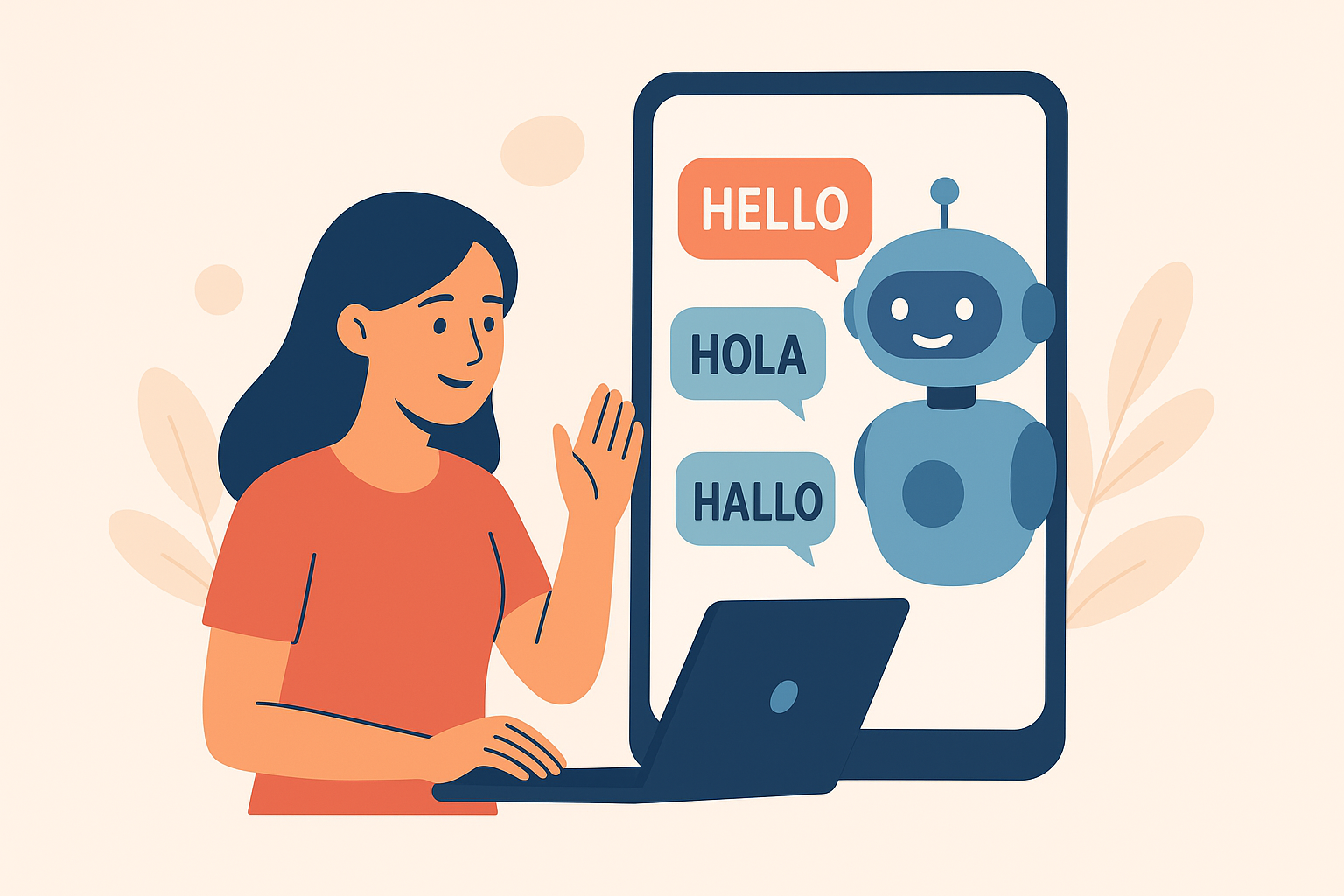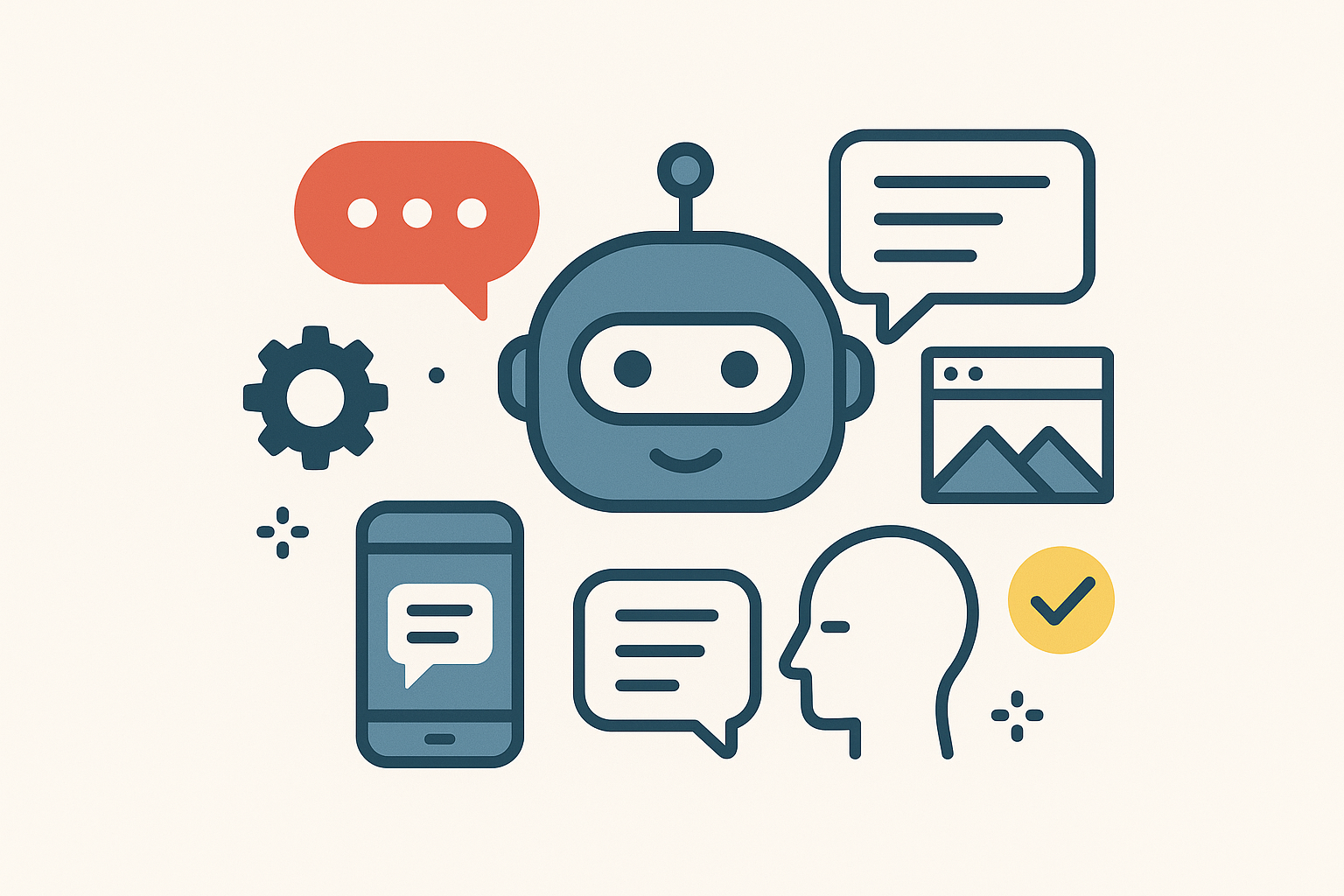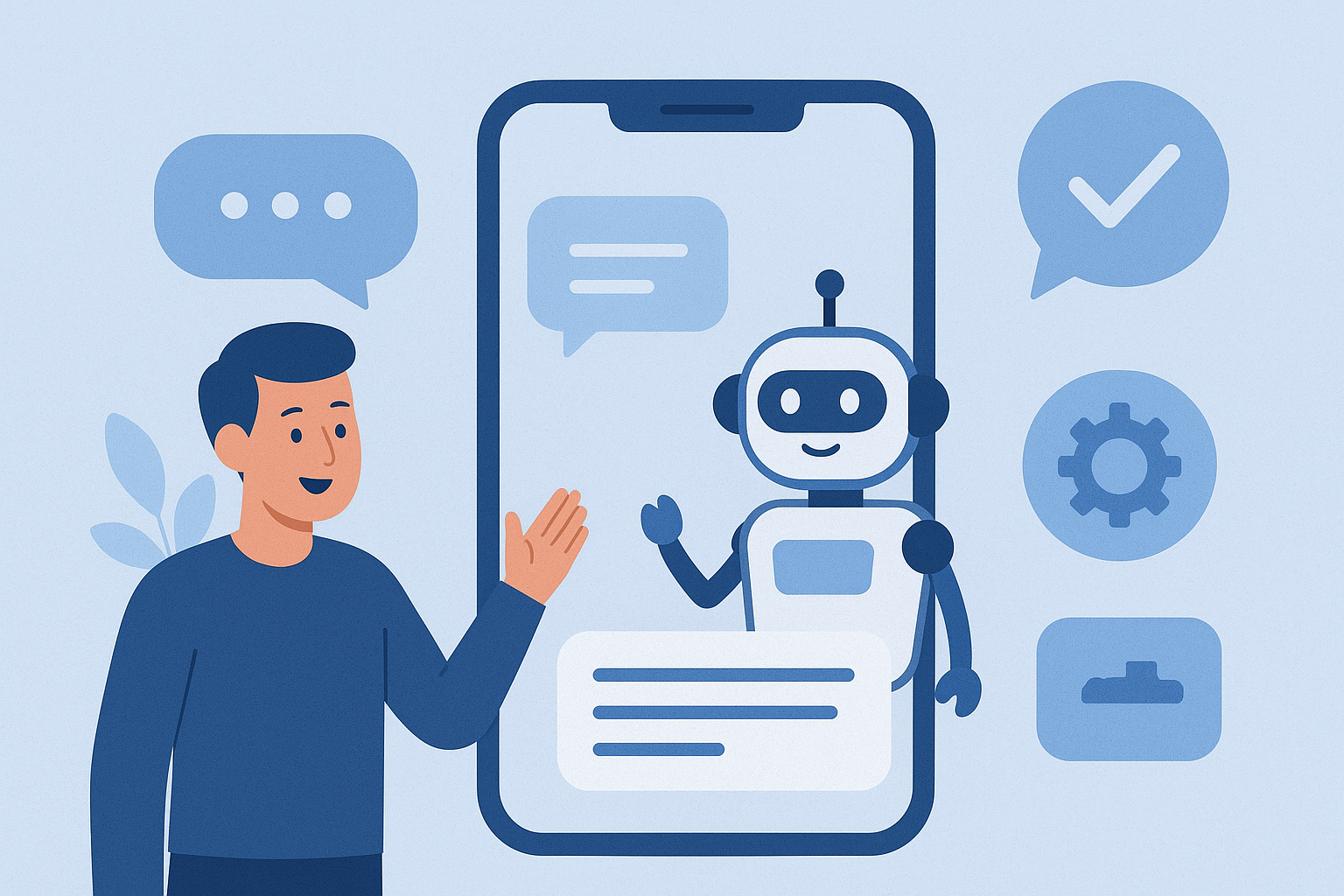In today’s fast-evolving digital world, chatbots have become the silent heroes of customer engagement. They enhance user experience, streamline communication, and boost business efficiency. However, creating a chatbot that feels human, understands intent, and maintains engagement requires more than code — it demands thoughtful design. A well-designed chatbot isn’t just functional; it’s conversational, intuitive, and emotionally intelligent. This is where the art and science of chatbot design come together, shaping digital assistants that connect, convert, and communicate naturally.
Introduction
The rise of artificial intelligence and conversational marketing has completely changed how businesses communicate with customers. In this new era, chatbots act as digital representatives, available 24/7 to handle queries, provide support, and even close sales. But what truly differentiates an average chatbot from a great one is design. The process of chatbot design goes far beyond writing automated responses — it’s about building trust, creating empathy, and offering a seamless user experience.
A platform like EngagerBot demonstrates the potential of smart design by combining natural language understanding with intuitive conversation flow. Whether it’s on a website, eCommerce platform, or social media channel, a well-designed chatbot makes every interaction personal and purposeful. In this blog, we’ll explore the key principles, psychology, and techniques behind designing a chatbot that feels alive and engaging — one that users enjoy talking to.
Understanding the Essence of Chatbot Design
Chatbot design is the process of shaping a digital assistant’s personality, tone, conversation flow, and visual experience to make interactions feel natural and human-like. It involves merging UX design, linguistics, and artificial intelligence to create a system that understands and responds effectively to user needs. The essence of chatbot design lies in communication — ensuring the chatbot listens, learns, and responds in a way that adds value to the user.
When designing a chatbot, it’s essential to think from the user’s perspective. What are they trying to achieve? How do they prefer to communicate? A chatbot that can predict intent and deliver personalized solutions creates satisfaction and loyalty. The design must be simple yet powerful, ensuring users never feel like they’re “talking to a robot.”
Moreover, the chatbot’s tone and structure should align with the brand’s voice. A luxury fashion brand might need a sophisticated chatbot, while a gaming platform may require a fun, informal tone. The real challenge of chatbot design is balancing automation with empathy — creating a tool that feels intelligent but also human-centered. Ultimately, the essence of chatbot design is about building relationships, not just automating responses.
The Role of AI and NLP in Modern Chatbot Design
Artificial Intelligence (AI) and Natural Language Processing (NLP) are the heartbeat of modern chatbot design. They enable chatbots to understand, interpret, and respond to human language in a meaningful way. Gone are the days of rigid keyword-based bots that couldn’t handle variations in phrasing. Today’s AI-driven chatbots can comprehend context, sentiment, and intent, which allows for smooth, human-like interactions.
AI makes chatbot design more dynamic. Through machine learning, chatbots can analyze user behavior and improve over time, adapting responses based on previous interactions. NLP ensures that conversations flow naturally, recognizing slang, abbreviations, and even emotional cues. Together, these technologies empower chatbots to handle complex conversations — from product recommendations to troubleshooting support.
However, AI and NLP alone don’t define great chatbot design. The way designers train these systems determines their effectiveness. Feeding diverse data, optimizing tone, and testing responses help ensure the chatbot stays accurate and emotionally aware. In the end, combining AI’s intelligence with a human-centered design philosophy creates a chatbot that feels genuinely conversational and engaging.
Designing with Purpose: Understanding User Intent
A chatbot’s success depends on how well it understands why users are interacting with it. Every conversation begins with intent — a goal the user wants to achieve. Whether they want to check an order, get support, or ask a question, a good chatbot design anticipates these needs and provides relevant solutions instantly.
To design for intent, businesses must analyze real user data. Patterns in conversations, frequently asked questions, and behavioral trends can guide how chatbots are structured. The better the understanding of user intent, the more seamless the chatbot experience.
Designers also need to think about frustration points. When users can’t find what they’re looking for, they quickly lose interest. A purpose-driven chatbot anticipates confusion and offers proactive guidance. By designing with intent in mind, chatbot creators can craft experiences that feel intelligent, empathetic, and goal-oriented — qualities that define exceptional chatbot design.
The Psychology Behind Effective Chatbot Conversations
At the heart of chatbot design lies the science of human psychology. Every user interaction is guided by emotion, motivation, and perception. Understanding these elements helps designers craft experiences that feel natural, trustworthy, and emotionally engaging. People don’t just want answers — they want to feel heard and understood. A chatbot that mimics human empathy and emotional intelligence builds deeper user connections and long-term brand loyalty.
Designers can incorporate psychological triggers such as reciprocity, trust, and familiarity into chatbot interactions. For instance, when a chatbot greets users warmly, remembers previous interactions, and uses their name, it activates a sense of belonging. Similarly, subtle humor, positive tone, and affirmation language (“Great choice!” or “You’re all set!”) enhance user satisfaction. The aim isn’t to replace humans but to emulate human-like warmth through intelligent conversation flow and emotional tone.
Furthermore, users often project human traits onto chatbots — a concept known as anthropomorphism. By giving the chatbot a consistent personality and relatable responses, designers can make the digital experience more engaging. Effective chatbot design uses psychology not as manipulation but as connection — ensuring every response feels authentic, respectful, and human-centered.
Crafting a Chatbot Personality that Reflects Your Brand
Every great chatbot has a unique personality — a blend of tone, style, and character that mirrors the brand it represents. Just as a company’s logo, color scheme, and messaging define its visual identity, the chatbot’s personality defines its conversational identity. Whether professional, playful, or empathetic, this personality helps users immediately recognize and trust the brand’s voice.
Creating a chatbot personality begins with understanding your audience. For instance, a financial chatbot should project reliability and professionalism, while an entertainment chatbot can be witty and relaxed. Once the tone is set, designers can use specific linguistic patterns, emojis, and phrasing to reinforce that personality consistently across all interactions.
A well-crafted personality also humanizes automation. It adds character to technology and transforms interactions from mechanical exchanges into meaningful conversations. When users feel emotionally connected to a chatbot, they’re more likely to engage, share feedback, and return. The key is balance: being friendly without being informal, intelligent without sounding robotic. A brand-aligned chatbot personality enhances both user experience and brand recall — essential elements in world-class chatbot design.
Visual and Conversational UI: The Art of Seamless Flow
Chatbots operate within two primary interfaces — visual and conversational. A visual UI includes buttons, menus, and quick replies, while a conversational UI focuses purely on natural text-based interaction. The best chatbot designs often merge both to provide users with a flexible and smooth experience.
The visual design should be intuitive and minimalistic, ensuring users know what to do next without confusion. Clear typography, readable message bubbles, and adaptive color themes aligned with brand identity enhance usability. On the other hand, conversational design determines the rhythm, tone, and progression of dialogue. Questions should feel natural, transitions smooth, and responses concise yet informative.
A seamless flow keeps users engaged while reducing friction. It also minimizes cognitive load — meaning users don’t have to “think” about how to interact with the chatbot. The ideal chatbot experience blends functional clarity with emotional resonance. When both the visual and conversational UIs complement each other, users feel guided, not forced. This harmony of design elements transforms simple chat interfaces into intelligent digital assistants that delight and deliver.
Personalization: Making Every Conversation Unique
One of the most powerful tools in chatbot design is personalization. Today’s users expect interactions tailored to their preferences, history, and needs. A well-designed chatbot remembers details, adapts tone, and modifies responses based on user behavior — making every conversation feel one-on-one.
Personalization in chatbot design can range from simple greetings (“Welcome back, Sarah!”) to advanced recommendations powered by AI analytics. When users receive relevant suggestions or information, they feel valued and understood. This emotional connection increases engagement and reduces drop-off rates.
However, personalization must always be handled with care. Over-familiarity or excessive data collection can feel intrusive. The goal is to use personalization strategically — enhancing experience without invading privacy. Transparency about data usage and clear consent messaging strengthen trust. When done right, personalization transforms chatbots into digital companions that not only serve but also understand. This is where design meets empathy — the foundation of meaningful automation.
Building Multi-Language Chatbots for Global Audiences

In an increasingly global digital economy, multi-language chatbot design is not a luxury but a necessity. Businesses today interact with customers from diverse linguistic and cultural backgrounds. A well-designed multilingual chatbot ensures inclusivity, accessibility, and cultural sensitivity — all of which are critical for building trust worldwide.
Designing a chatbot that supports multiple languages involves more than direct translation. It requires localization — adapting tone, idioms, and cultural references to match regional preferences. For example, a chatbot greeting in Japan might emphasize politeness, while one in Brazil could use a warmer, more casual tone.
Modern chatbot frameworks powered by NLP can detect a user’s language automatically and switch seamlessly. The challenge lies in maintaining consistency in design and accuracy in communication across languages. Successful multilingual chatbot design combines linguistic intelligence with cultural empathy, making every user feel equally valued, regardless of geography. In doing so, brands extend their reach while upholding authenticity in every interaction.
Integrating Chatbots Across Platforms
Today’s consumers engage across multiple platforms — websites, social media, mobile apps, and messaging services. A smart chatbot design ensures consistent user experience across all these touchpoints. Whether it’s Facebook Messenger, WhatsApp, or an eCommerce website, the chatbot must maintain its tone, logic, and design identity everywhere.
Integration allows users to start a conversation on one platform and continue it seamlessly on another without losing context. This omnichannel approach strengthens user convenience and brand credibility. Designing such interoperability requires a deep understanding of platform APIs, user interface variations, and cross-platform behavior.
For example, chatbots on websites might focus on lead generation, while on Instagram, they handle engagement and product discovery. Despite these variations, the brand’s chatbot must feel the same — consistent tone, design, and personality. When done effectively, cross-platform chatbot design ensures that no matter where users interact, they receive the same high-quality, personalized, and intelligent experience — the hallmark of superior design.
Conversational Flow Mapping: Structuring Dialogue That Feels Human
Every successful chatbot begins with a well-planned conversational flow. This is the structural backbone that ensures the bot can guide users smoothly through a series of interactions without confusion or dead ends. The best-designed chatbots are those that feel spontaneous yet follow a clear logic that aligns with user goals.
Conversational flow mapping is the process of outlining possible paths a conversation may take. Designers anticipate questions, map user responses, and design the bot’s replies accordingly. This structure helps prevent repetitive or irrelevant answers, ensuring that every exchange feels thoughtful and helpful.
A good chatbot flow also mimics natural human dialogue. It allows for small talk, confirmation, and emotional context, making users feel comfortable during the conversation. Strategic pauses, clarifications, and acknowledgment statements (“I understand,” “Let me check that for you”) can make digital interactions more natural.
Designers often use flow diagrams or visual tools to build these paths. By simulating user journeys, they can identify weak points and improve engagement. The result is a chatbot that feels less like a program and more like a personal assistant — intuitive, responsive, and human-centered. In essence, conversational flow mapping bridges the gap between artificial intelligence and authentic communication.
The Importance of Testing and Continuous Improvement
No chatbot design is perfect on the first try. Continuous testing and iteration are what transform a functional chatbot into a truly exceptional one. Chatbots must evolve alongside user behavior, business goals, and technological advancements. This process begins with thorough testing — from usability to accuracy to emotional tone.
Testing helps identify errors, awkward responses, and misinterpreted intents. It ensures that the chatbot not only functions but communicates effectively. Designers use A/B testing, real-world feedback, and analytics tools to measure success. Metrics like completion rates, drop-off points, and user satisfaction reveal how well the chatbot performs in actual use.
After testing, improvement is ongoing. AI-driven bots learn from interactions, but they still require human supervision to ensure responses remain relevant and aligned with brand values. Regular updates to dialogue content, tone, and flow enhance performance and maintain engagement. The secret to successful chatbot design isn’t launching it — it’s nurturing it. Continuous learning and optimization keep chatbots sharp, empathetic, and valuable to users.
Emotional Intelligence in Chatbot Design
A truly effective chatbot must possess emotional intelligence (EI) — the ability to recognize and respond to user emotions. While machines don’t “feel” emotions, they can detect patterns in language that indicate mood, such as frustration, excitement, or confusion. Incorporating emotional intelligence into chatbot design allows bots to adjust their tone and responses to improve user comfort and satisfaction.
For example, if a user types “I’m upset this isn’t working,” a smart chatbot shouldn’t reply with a generic solution. Instead, it should acknowledge emotion (“I’m really sorry you’re frustrated — let’s fix this together.”). This kind of response humanizes the interaction and builds trust.
Designers integrate emotional intelligence by training chatbots with sentiment analysis algorithms and empathetic language models. They also test how the bot reacts to sensitive or complex user inputs. The ultimate goal is not to make the chatbot act human, but to make it feel human-friendly. When empathy meets automation, users feel valued — a core principle of powerful chatbot design.
Accessibility in Chatbot Design
An inclusive chatbot design ensures accessibility for all users, regardless of their abilities. Accessibility means that anyone — including people with disabilities — can easily interact with the chatbot. This involves attention to readability, voice support, navigation ease, and color contrast in design.
Chatbots should be compatible with assistive technologies like screen readers and voice-to-text software. Text size, button spacing, and clarity of visual elements are essential in creating an accessible experience. Designers must also consider users who prefer audio-based interactions, ensuring that the chatbot can respond effectively through voice interfaces.
Moreover, language accessibility plays a huge role. Simplified text, minimal jargon, and clear options help non-native speakers and individuals with cognitive challenges interact confidently. Designing for accessibility isn’t just a technical requirement — it’s a moral responsibility. It reflects a brand’s commitment to inclusivity, empathy, and respect. The most successful chatbot designs are not those that serve the majority, but those that include everyone.
Security and Privacy in Chatbot Design
As chatbots collect personal data such as names, emails, and behavioral insights, security and privacy become top priorities in design. Users must feel safe while sharing information, and designers must ensure that chatbots comply with global data protection standards like GDPR or CCPA.
A secure chatbot architecture uses encrypted data transmission, authentication protocols, and limited access to sensitive user details. Transparency is equally important — users should always be informed about what data is being collected and why. Adding privacy policies and consent options within chatbot conversations builds credibility and trust.
Moreover, designers must ensure that sensitive topics are handled carefully. A chatbot should recognize when a query involves confidential information and guide users toward secure channels or human agents. The goal is to create confidence, not concern. Trust is the foundation of engagement, and without strong data protection, even the most advanced chatbot can fail. By prioritizing security-first design, businesses can guarantee reliability and peace of mind for every user.
The Role of Visual Branding in Chatbot Interfaces
Visual design plays a vital role in how users perceive and connect with a chatbot. A chatbot’s interface is often the first impression of a brand’s digital identity, so visual branding must be consistent, appealing, and memorable. The colors, typography, icons, and animation used within the chatbot all contribute to brand recognition.
For instance, a chatbot designed for a healthcare company might use calm blues and soft gradients to evoke trust, while one for a tech startup might feature bold fonts and dynamic animations. Every design element should reflect the brand’s character and mission.
Animations and micro-interactions also add personality. A simple typing indicator, waving emoji, or greeting animation can make the chatbot feel more alive and friendly. Consistency is key — the visual style should align across all platforms, ensuring users instantly identify the brand no matter where they interact. A visually cohesive chatbot not only strengthens brand identity but also enhances user experience, turning a functional tool into a memorable digital companion.
Measuring Chatbot Performance and User Engagement
Designing a chatbot is only half the journey — measuring its effectiveness completes the process. A beautifully designed chatbot that doesn’t deliver measurable results offers little value. Performance metrics help designers understand how users engage with the bot, where they drop off, and which interactions lead to conversions or satisfaction.
Key performance indicators (KPIs) such as engagement rate, response accuracy, completion rate, and retention reveal how well the chatbot is performing. Analyzing these metrics helps identify weak areas in design or conversation flow. For example, if users often exit during a particular interaction, it may indicate confusing wording or missing context.
User engagement metrics also provide valuable behavioral insights. They help refine the chatbot’s tone, optimize responses, and improve user experience over time. Feedback collection, whether through surveys or automated prompts, plays a crucial role in understanding user satisfaction.
Ultimately, measurement is not just about numbers — it’s about understanding user intent and emotion. By combining quantitative data with qualitative analysis, businesses can make informed design improvements. Continuous monitoring ensures the chatbot remains relevant, adaptive, and engaging — the very essence of superior chatbot design.
Future Trends in Chatbot Design

The future of chatbot design is defined by continuous innovation, AI evolution, and human-centered creativity. As technology advances, chatbots are becoming more capable, conversational, and emotionally aware. Designers must stay ahead of these trends to craft experiences that feel futuristic yet grounded in empathy.
One emerging trend is voice integration, where chatbots interact through natural speech. With the rise of smart assistants like Alexa and Google Assistant, voice-enabled chatbot design is rapidly gaining traction. Another trend is emotion recognition, allowing bots to detect emotional cues through text or tone and respond accordingly.
Additionally, the fusion of augmented reality (AR) and chatbots is transforming digital engagement. Imagine chatting with a virtual assistant that appears on your phone camera, guiding you through visual experiences. AI-driven predictive chatbots will also become more proactive, anticipating user needs before they even ask.
The future isn’t about replacing humans — it’s about enhancing communication. Designers who blend creativity with technology will lead this transformation. Tomorrow’s chatbot won’t just answer questions — it will understand context, anticipate needs, and express empathy. The future of chatbot design belongs to brands that value both intelligence and humanity in every interaction.
Why Great Chatbot Design Defines Digital Success
In today’s digital landscape, where attention spans are short and user expectations are high, great chatbot design can make or break a brand’s success. Chatbots are no longer just support tools — they are an extension of a company’s brand personality, customer service, and marketing strategy.
A thoughtfully designed chatbot enhances engagement, boosts conversions, and builds emotional loyalty. It acts as a bridge between technology and empathy, delivering value through every conversation. When users feel understood, guided, and appreciated, they form lasting impressions — and these impressions shape brand loyalty.
Businesses that invest in design excellence gain a competitive edge. A well-crafted chatbot not only improves operational efficiency but also transforms how users perceive the brand. It becomes a living digital representative — one that communicates intelligently and cares genuinely.
Ultimately, great chatbot design isn’t just about aesthetics or technology. It’s about purpose, connection, and trust. The brands that recognize this — and design accordingly — will define the next era of digital engagement.
Conclusion
The evolution of chatbot design represents a remarkable fusion of creativity, psychology, and technology. A chatbot isn’t just software — it’s a voice that represents your brand, an assistant that serves your users, and an experience that defines your business identity. From understanding user intent and personality design to implementing AI, emotional intelligence, and accessibility, every layer of chatbot design contributes to how effectively it engages users.
Platforms like EngagerBot embody this evolution, proving that intelligent design can transform how businesses communicate online. When chatbots are designed with empathy, intelligence, and purpose, they do more than respond — they connect. The future belongs to chatbots that understand before they answer and engage before they sell. By mastering the art of chatbot design, businesses open the door to limitless engagement and authentic digital relationships that last.

